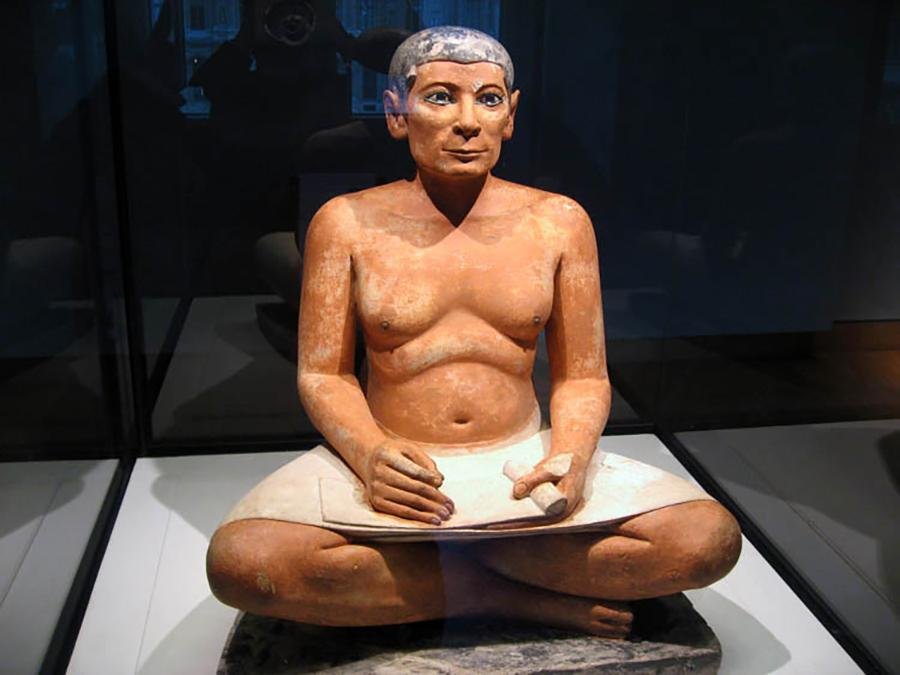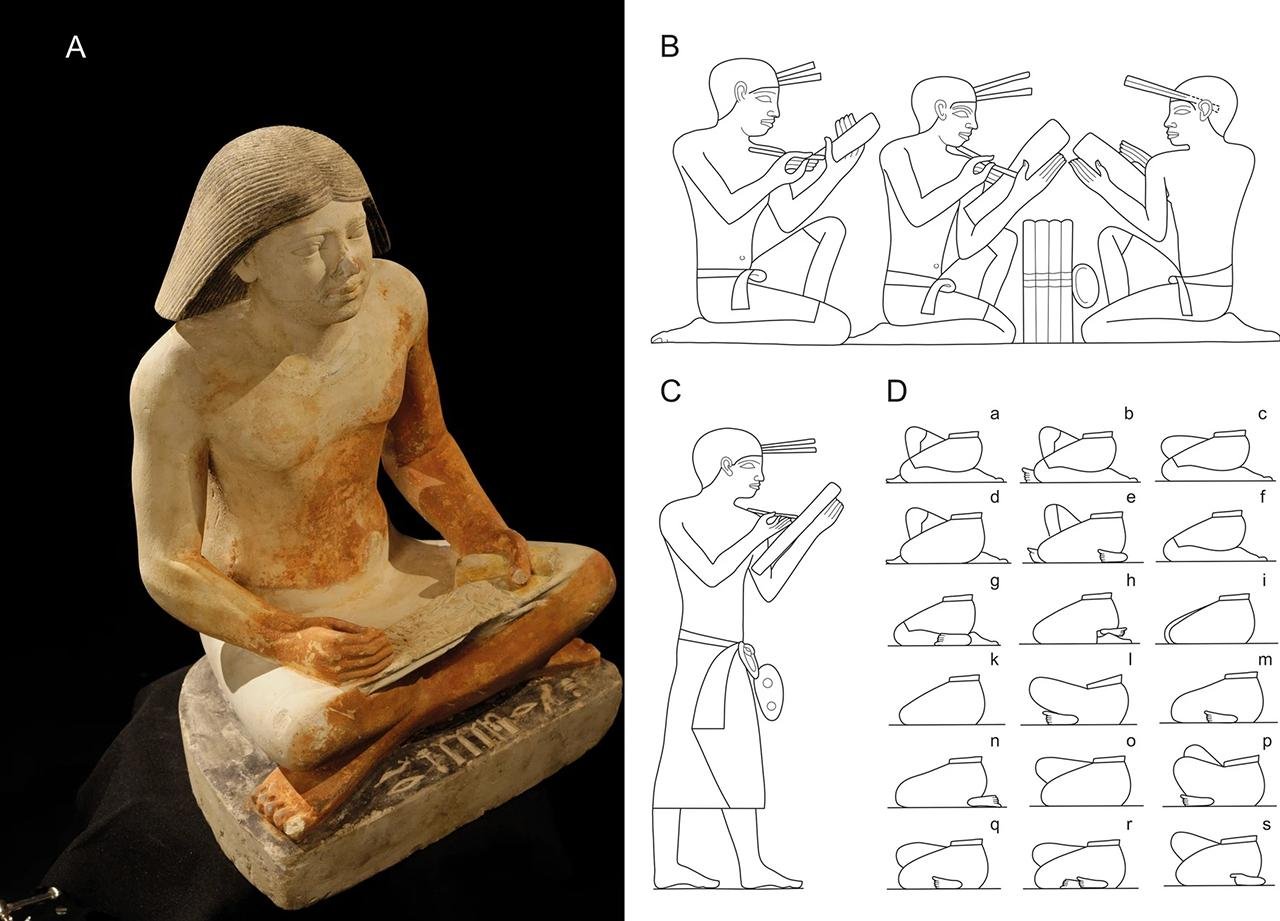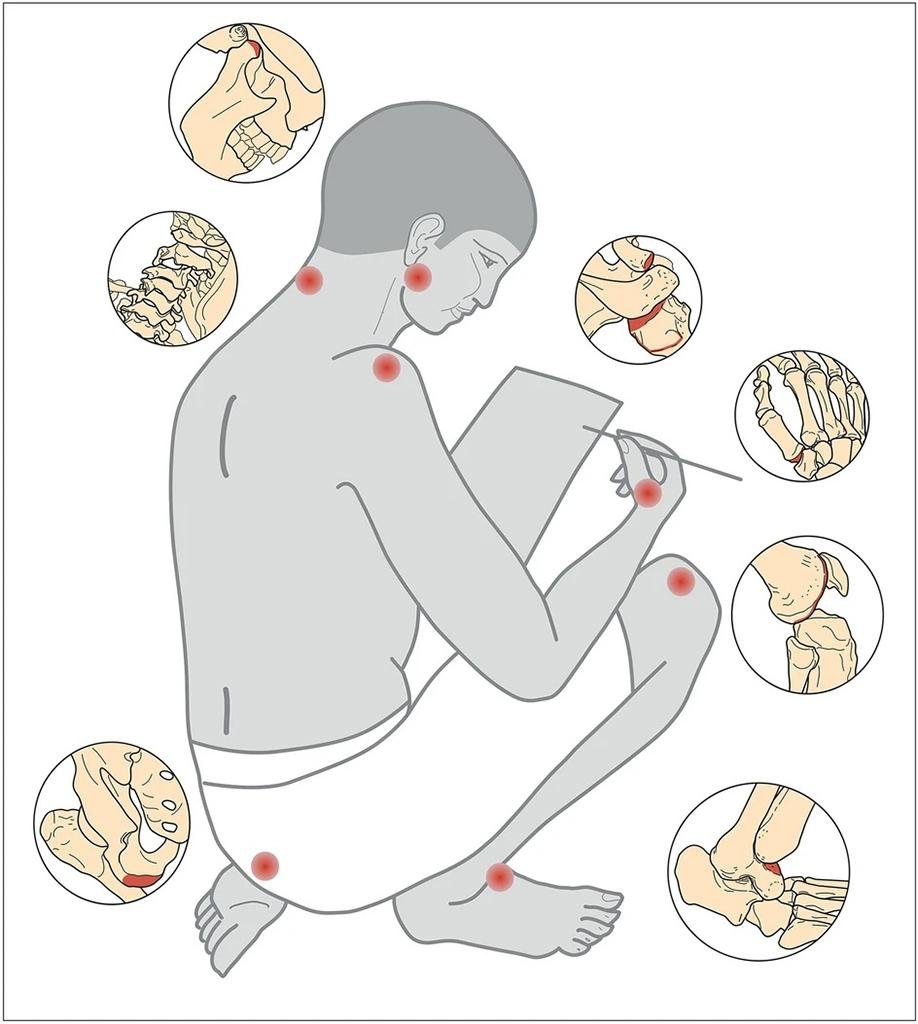
Archaeology
Archaeology is the study of human history and prehistory through the excavation and analysis of artefacts, structures, and other physical remains.
Archaeology is the study of human history and prehistory through the excavation and analysis of... View more
Ancient Egyptian scribes faced occupational hazards, study finds
-
Ancient Egyptian scribes faced occupational hazards, study finds
Recent research on skeletal remains from the ancient Egyptian necropolis of Abusir, dating back to the 3rd millennium BCE, has uncovered the occupational hazards faced by scribes due to their repetitive tasks and working postures. This study, published in the journal Scientific Reports, highlights how the daily activities of these literate men led to degenerative changes in their skeletons.

The Seated Scribe, 4th or 5th Dynasty of Egypt, c. 2600 – 2350 BCE, from Saqqara, on display in the Louvre, Paris. Credit: Mindy McAdams In ancient Egypt, scribes held a prestigious status, primarily due to their literacy—a skill possessed by only about 1% of the population during the Old Kingdom. Scribes performed vital administrative functions and were integral to the operation of the state’s bureaucracy. Despite their high social standing, the physical toll of their work is evident in their skeletal remains.
<a class="wpg-linkify wpg-tooltip" title="
Petra
Petra is an ancient city located in present-day Jordan, known for its remarkable rock-cut architecture and historical significance. Often referred to as the “Rose City” due to the color of the stone from which it is carved, Petra is a UNESCO World Heritage site and one of the New Seven Wonders of the World. Map of the archaeological sites at Petra, in Jordan. Credit: Wikipedia Established around the 6th century BCE by the Nabataean civilization, Petra served as an important” href=”https://archaeologymag.com/encyclopedia/petra/” target=”_blank”>Petra Brukner Havelková, an anthropologist with the National Museum in Prague, led a team that examined the remains of 69 adult males buried in Abusir, 30 of whom were identified as scribes. The researchers found that scribes exhibited a higher prevalence of degenerative joint changes compared to their non-scribe counterparts. These changes were most pronounced in the joints connecting the lower jaw to the skull, the right collarbone, the top of the right humerus, the first metacarpal bone in the right thumb, the bottom of the thigh, and throughout the spine, especially in the neck.
The team suggested that these degenerative changes likely resulted from the prolonged cross-legged sitting position commonly adopted by scribes, with the head bent forward, the spine flexed, and the arms unsupported. Additional changes in the knees, hips, and ankles indicated that scribes might have also sat in a kneeling or squatting position, with one leg bent upwards.

Working positions of scribes. (A) cross-legged (sartorial) position; (B) kneeling-squatting position; (C) standing position (D) based on tomb relief decoration, different position of the legs when sitting. Drawing Jolana Malátková. Credit: Brukner Havelková et al. Scientific Reports (2024) Archaeological evidence, such as statues, wall reliefs, and historical texts, corroborates these findings, depicting scribes in various working postures. These sources reveal that scribes typically used a thin rush pen for writing on papyrus, wooden boards, and <a class="wpg-linkify wpg-tooltip" title="
Ostracon
Ostraca (singular: Ostracon) are small fragments of pottery, stone, or other materials that were used as a writing surface in ancient times. The word ‘ostracon’ comes from the Greek word for “shell,” as the pottery fragments used for writing often resembled shells in shape. Ostraca were used in various cultures throughout history, including ancient Egypt, Greece, and Rome. They were commonly used for recording everyday transactions, legal proceedings, or political decisions. In ancient Egypt, ostraca were used extensively during the” href=”https://archaeologymag.com/encyclopedia/ostracon/” target=”_blank”>ostraca. The physical stress from their repetitive tasks is further evidenced by signs of degeneration in their jaw joints, likely caused by chewing the ends of rush stems to form brush-like heads, and in their right thumbs from pinching the pens.
“Our research reveals that remaining in a cross-legged sitting or kneeling position for extended periods, and the repetitive tasks related to writing and the adjusting of the rush pens during scribal activity, caused the extreme overloading of the jaw, neck, and shoulder regions,” the study authors wrote.

Drawing indicating the most affected regions of the skeletons of scribes with higher prevalence of evaluated changes compared to reference group. Credit: Brukner Havelková et al. Scientific Reports (2024) The skeletal changes observed in ancient scribes have parallels in modern occupational health issues. Prolonged sitting in inappropriate positions continues to affect the human skeleton similarly today, causing spine degeneration, joint arthrosis, and subsequent pain. “We can only record changes in the skeleton, not in any soft tissues,” Havelková told Newsweek. “But, according to the results of our study, compared with the results of clinical, orthopedic, and ergonomic studies of current occupational risk factors, it seems that prolonged sitting in an inappropriate position still affects the human skeleton in the same way.”
The study underscores how even privileged positions in historical societies came with their own set of occupational hazards, revealing a more nuanced picture of daily life in ancient Egypt.
More information: Brukner Havelková, P., Dulíková, V., Bejdová, Š. et al. (2024). Ancient Egyptian scribes and specific skeletal occupational risk markers (Abusir, Old Kingdom). Sci Rep 14, 13317. doi:10.1038/s41598-024-63549-z
Sorry, there were no replies found.
Log in to reply.
